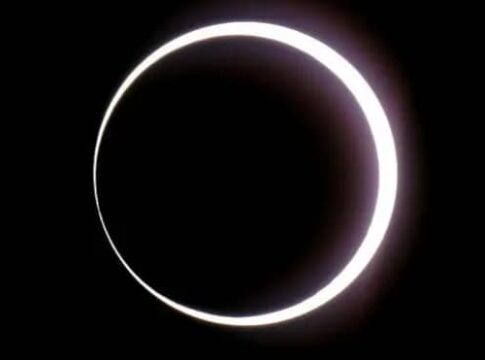West Africa will experience two solar eclipses in 2025, a phenomenon that will captivate sky gazers and astronomers alike.
To understand this spectacle, let’s dive into the science behind solar eclipses. According to Dr. Carolyn Sumners, Vice President of Astronomy at the Houston Museum of Natural Science, “Solar eclipses occur when the sun, moon, and Earth align perfectly, casting a shadow that partially or totally blocks the sun’s light.”
The upcoming annular solar eclipse, dubbed the “ring of fire,” will take place on October 2nd. This event occurs when the moon, at a farther point in its orbit, obscures all but a ring-shaped sliver of the sun. As Dr. Sumners explains, “The moon isn’t quite big enough to cover the sun entirely.”
This eclipse will primarily be visible over the Pacific Ocean, with Easter Island and parts of Argentina and Chile getting a glimpse. A partial solar eclipse will also be visible in Brazil, Paraguay, Uruguay, and Hawaii.
READ MORE: 30,000 Niger Delta Ex-Agitators Unite Against #FearlessOctober Protest
Safety first! Viewing the eclipse requires special solar eclipse glasses that block ultraviolet light and nearly all visible light. Dr. Sumners cautions, “Looking directly at the sun can cause eye damage, even when most of it is covered.”
If you can’t get eclipse glasses, create a pinhole projector using household materials. Dr. Sumners suggests using a cereal box to project the sun’s image safely.
The 2025 eclipses will be followed by two total lunar eclipses in March, painting the moon red. Mark your calendars for the next total solar eclipse in 2026, visible in Greenland, Iceland, and Spain.
Would you like to explore more about solar eclipses, astronomy, or space exploration?
Freely subscribe to the African Future Leadership Magazine to get more updates.




